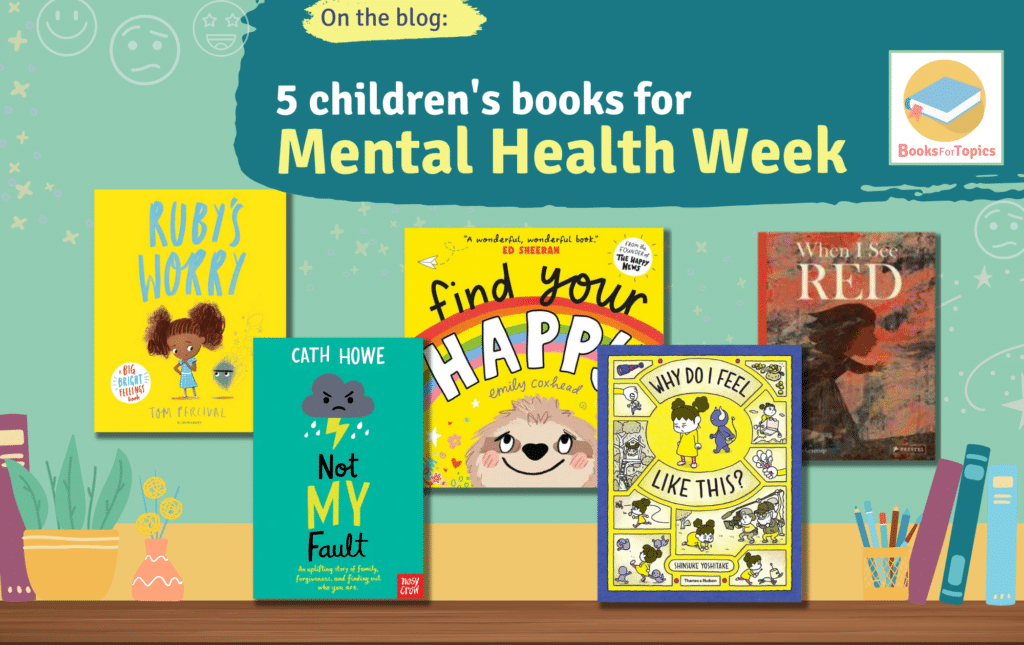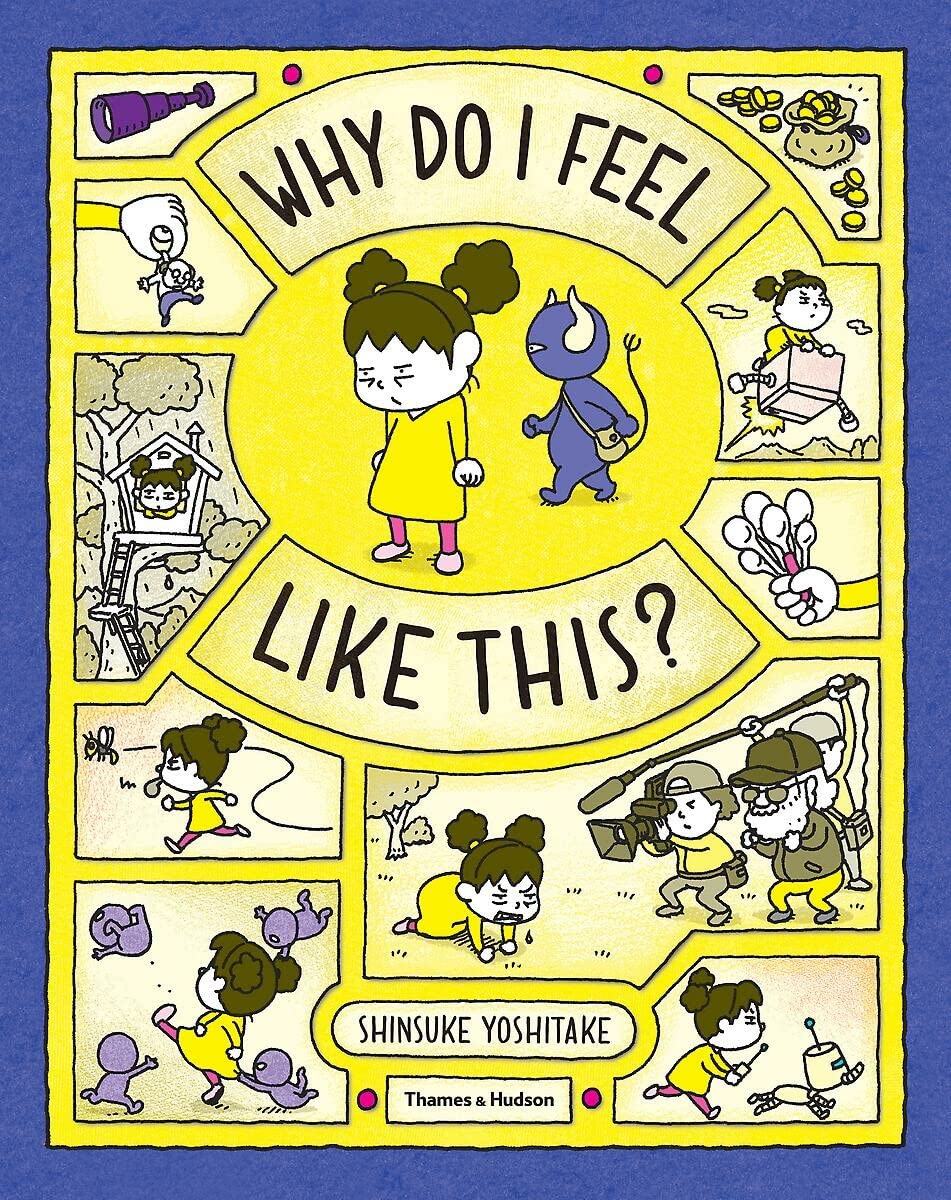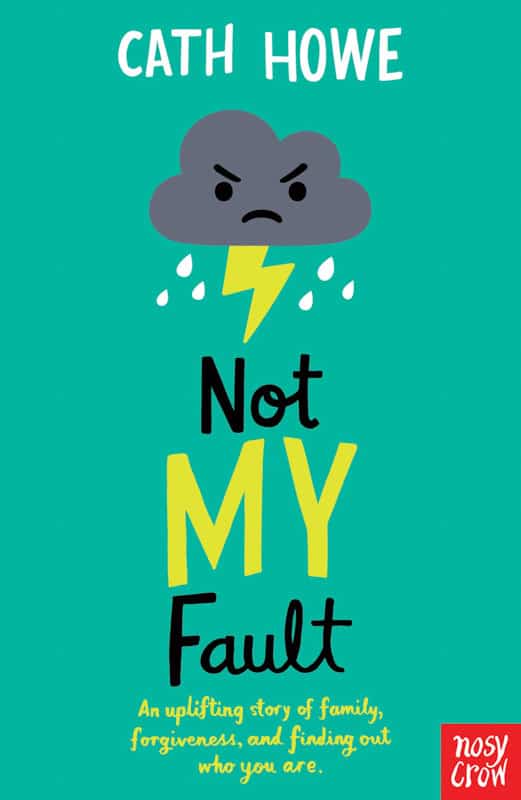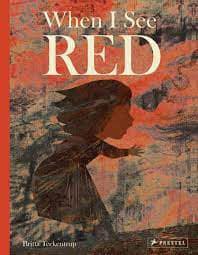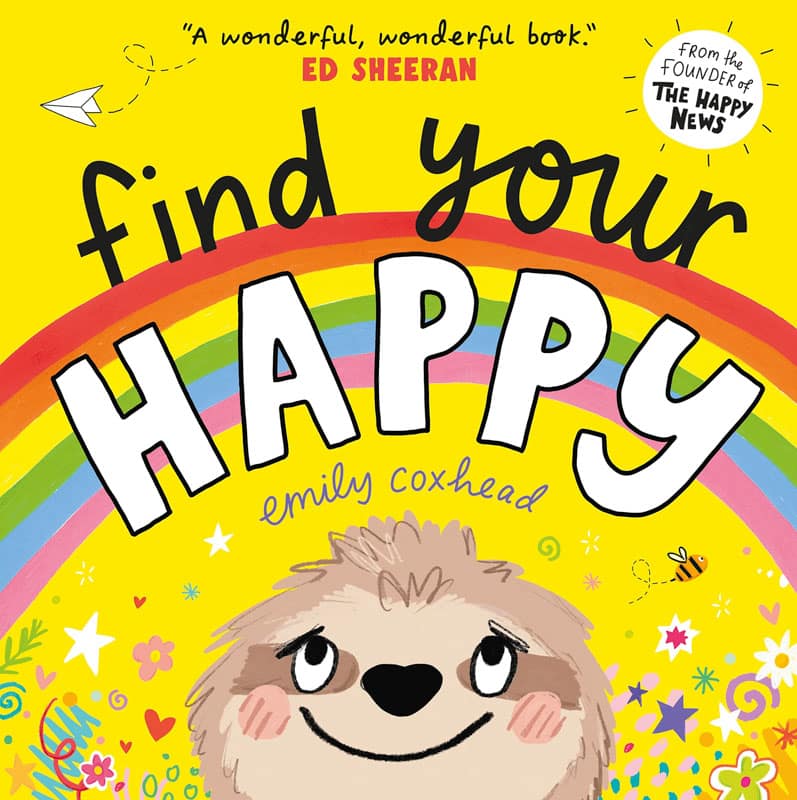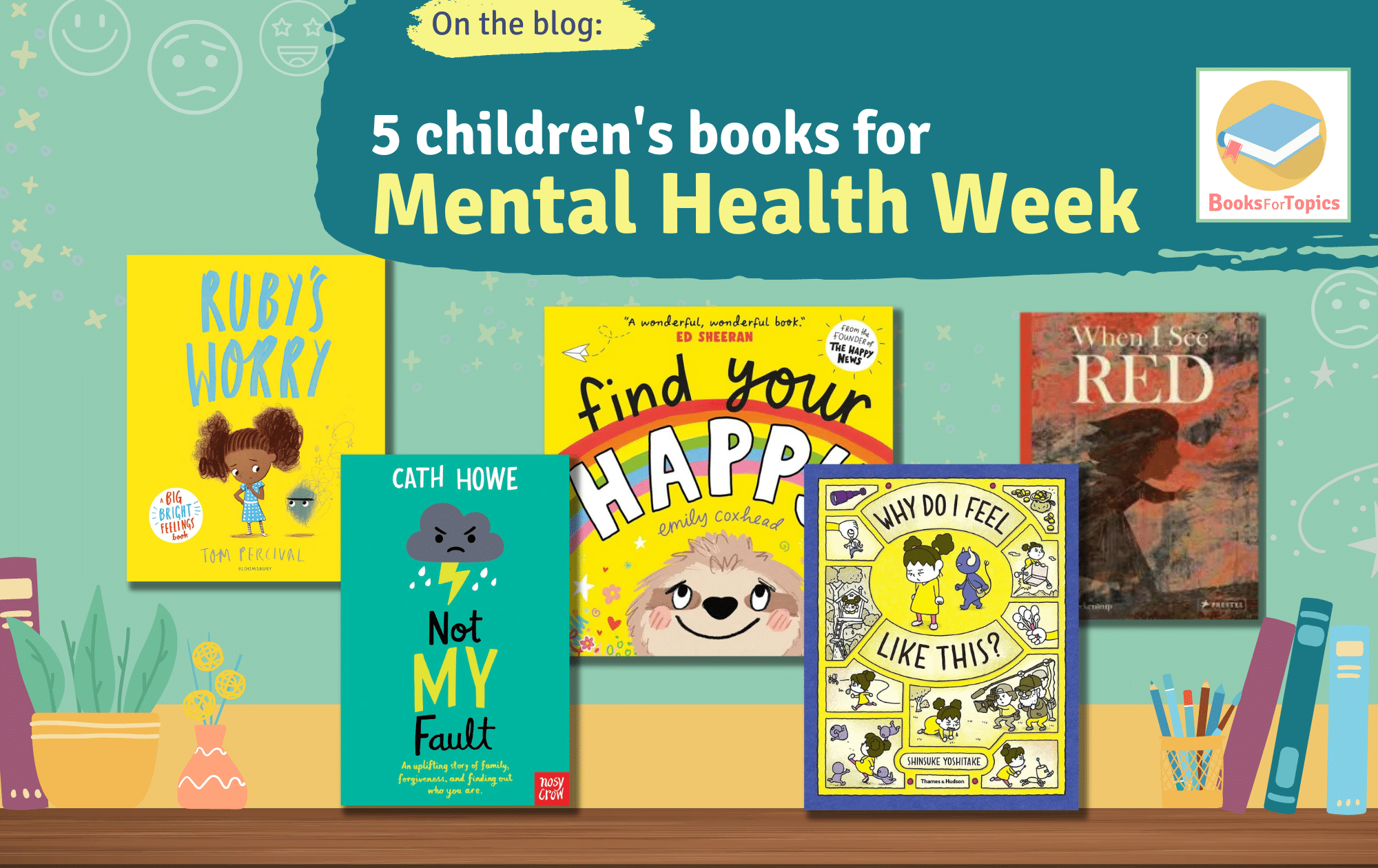
Books for Children’s Mental Health Week 2024
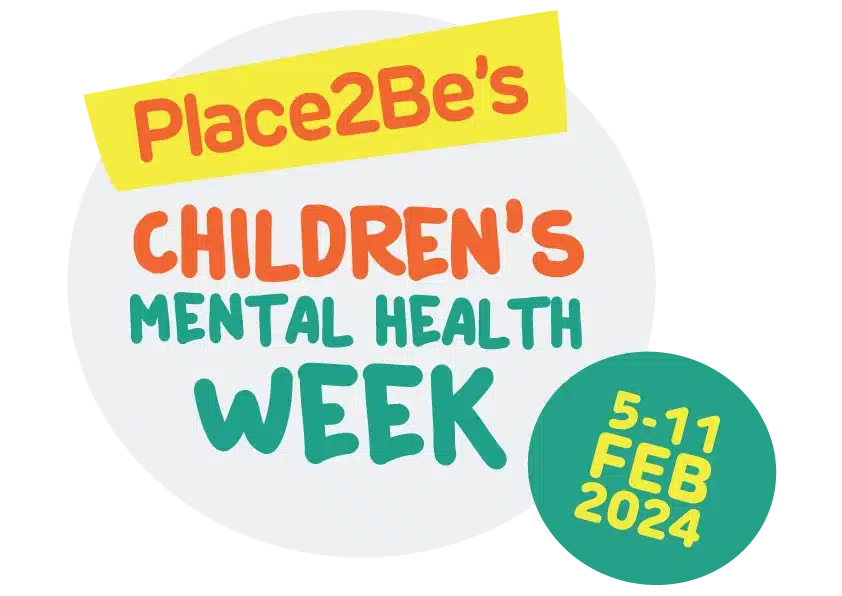 Children’s Mental Health Week 2024, organized by the charity Place2Be, takes place February 5-11 2024, with this year’s theme being My Voice Matters.
Children’s Mental Health Week 2024, organized by the charity Place2Be, takes place February 5-11 2024, with this year’s theme being My Voice Matters.
Celebrating its tenth year, Place2Be initiated the first-ever Children’s Mental Health Week in 2015 to emphasize the significance of children and young people’s mental health. Resources for schools and families to participate in Children’s Mental Health Week can be found on the Place2Be website.
The theme of My Voice Matters is about empowering children and young people by providing them with the tools they need to express themselves. When we feel empowered, this can have a positive impact on our well-being. Children and young people who feel that their voices are heard and can make a difference have a greater sense of community and self-esteem. This year, the aim is for children of all ages, backgrounds and abilities to be empowered to work together to create a positive change for their mental health and wellbeing.
For children, books can provide a powerful springboard to learn about themselves and the world, allowing them to share concerns and fears in a secure environment and to really believe that their voice matters. From books exploring and naming different feelings like Find Your Happy and Why Do I Feel like This, to stories about speaking up about worries and problems like Ruby’s Worry and Not My Fault, there are plenty of excellent children’s to choose from that can open up conversations about mental health.
This blog highlights five top book recommendations to use with children for this year’s Children’s Mental Health Week. The selected books also feature on our Mental Health booklist and Emotional Literacy booklist, and schools can purchase full packs of these lists via Peters.
Why Do I Feel Like This? by Shinsuke Yoshitake
Shinsuke Yoshitake’s books are always a treat to look forward to, beloved by adults and children alike, for the inimitable illustration style and inventive, philosophical texts which prompt us to think more deeply, more imaginatively about the world around us. Many BooksForTopics users are fans of Can I Build Another Me and will be pleased to discover more books in a similar style.
‘Why Do I Feel Like This?’ looks at where our bad, mad, sad feelings come from and how we can make sense of them. As all the options are investigated, there is no shying away from darker impulses, such as “I wish they’d trip over a rock and hurt themselves”, counter-acted by thoughts such as “Hating people doesn’t feel good”. A range of coping mechanisms are explored, such as distracting yourself, talking your problems through and realising that everyone feels this way sometimes.
There are no easy answers here though, this is by no means a child’s self-help book. It is a witty, relatable exploration of negative thoughts that asks many more questions than it answers, allowing the reader space to think, discuss, and draw conclusions for themselves. The book reassures us that a whole range of feelings is a normal part of human existence.
 As a teacher or librarian, I would use Why Do I Feel Like This? with children throughout the primary school age range, knowing that each time they return to it they will see more, and get more, from the story as their own emotional understanding develops. This simply wonderful book features in both our Emotional Literacy book collection and Mental Health booklist.
As a teacher or librarian, I would use Why Do I Feel Like This? with children throughout the primary school age range, knowing that each time they return to it they will see more, and get more, from the story as their own emotional understanding develops. This simply wonderful book features in both our Emotional Literacy book collection and Mental Health booklist.Ruby’s Worry by Tom Percival

Ruby’s Worry is an accessible mental-health-themed picture book that is a popular choice among primary classes, along with the rest of Tom Percival’s Big Bright Feelings series including Perfectly Norman, Milo’s Monster, Tilda Tries Again and Meesha Makes Friends. Children love the personification of big feelings like worry, fear or anger and enjoy seeing how recognising and dealing with big feelings is preferable to ignoring them or bottling things up
In this book, Percival depicts a ‘worry’ as a bright yellow orb that appears next to Ruby one day and continues to grow when she ignores the shadow-like entity, simply hoping that the worry will disappear of its own accord.
When Ruby meets another child with their own ‘worry’ and asks them about their feelings, she realises how to rid herself of worries – she needs to talk about them.
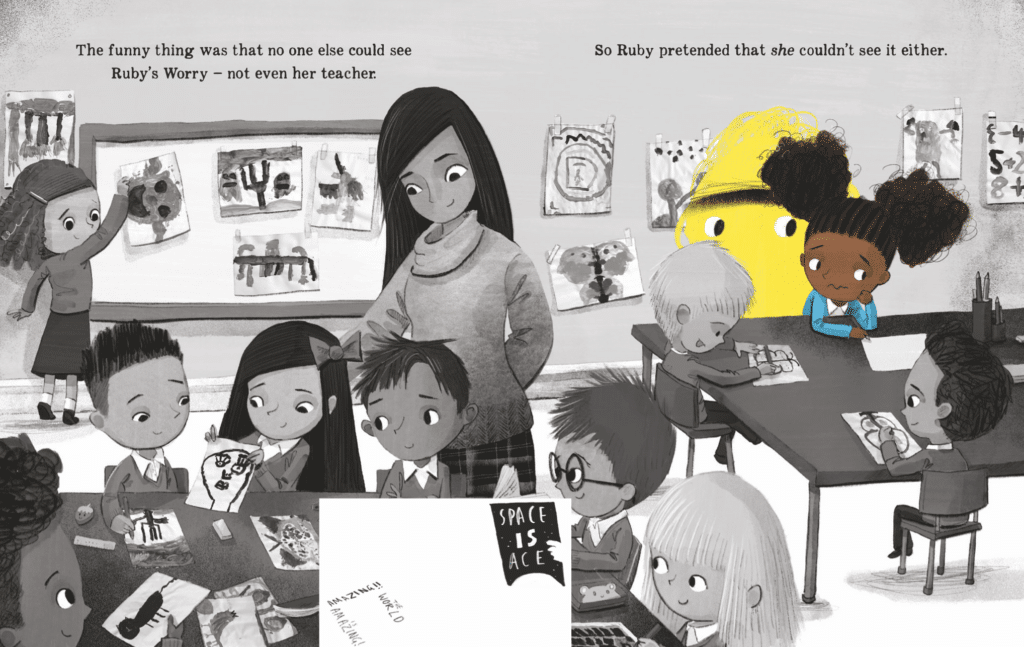
The book has sparked meaningful class discussions, supporting pupils to understand that ‘it’s okay to not be okay’ and that talking helps. Ruby’s Worry is one of the most important and relatable books to share with young people. It normalises feelings of anxiety and teaches readers about sharing their troubles rather than letting them spiral out of control.A free resource pack provided by the publisher is available for teachers to download to accompany the book Ruby’s Worry, and another teaching pack that covers the full series is downloadable from here.
Not My Fault by Cath Howe
Cath Howe’s books are popular with Year 5 and 6 readers and typically address bottled-up emotions relating to life’s ups and downs. Many of our Year Group Booklist users will recognise Ella on the Outside from our Year 5 booklist and My Life on Fire from our Year 6 reading list. For this year’s Children’s Mental Health Week with its theme of My Voice Matters, we are recommending Not My Fault.
Not My Fault is a dual-perspective story about two siblings – Maya and Rose – who no longer talk to each other after an accident in the playground. The narrative is told through alternating chapters from the perspective of each sister.
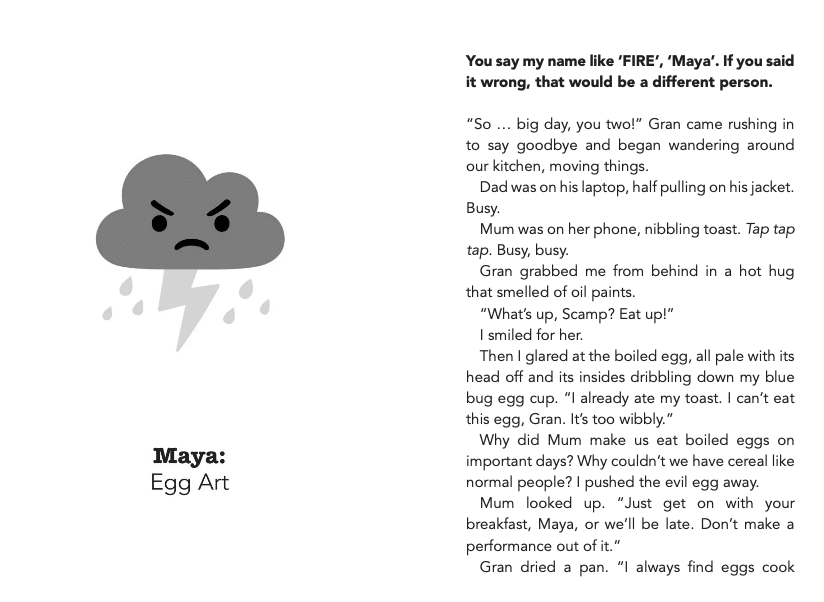 One sister’s narrative will resonate with anyone who has felt a build-up of unspoken anger, resentment or a desire for revenge, while the other’s will be relatable to readers who have ever struggled to speak the right words to influence a situation or relationship that feels beyond their control or who have borne the weight of unfounded guilt.
One sister’s narrative will resonate with anyone who has felt a build-up of unspoken anger, resentment or a desire for revenge, while the other’s will be relatable to readers who have ever struggled to speak the right words to influence a situation or relationship that feels beyond their control or who have borne the weight of unfounded guilt.Many young readers will easily empathise with both perspectives. A week-long residential trip with school is exactly what the two girls need to bring their unspoken tensions to a crunch point that will bring change for good.
This is a page-turning story with convincing narrative voices and a springboard into discussions about what happens when very big feelings stay bottled up inside.
A helpful resource pack is available to download from the publisher, featuring creative writing, art and drama ideas.
When I See Red by Britta Teckentrup
This is an unusual picturebook from our ELSA booklist that captures the experience of being swept up in an overwhelming emotional state.
When I See Red is a stunningly illustrated book that tells the ‘story’ of anger. Anger in this book is seen like a storm: we see how the storm gathers and blinds, as well as how the storm heralds ‘the change’ that anger can inspire. The author’s choice of words to describe the storm complements the illustrations – stunning print designs – which show the main, unnamed character’s journey through her rage and ‘the storm’.
The all-encompassing feeling of anger is fabulously described through poetic language and illustration. Every few pages there is a double-page spread of illustration which seems to mirror the way anger can take over our whole being. Despite this, what is so refreshing is this picture book puts the angry young girl in charge of her fury – clearly in control, knowing what she is doing, knowing what and whom she is calling on to demonstrate her rage. The suppression felt before the anger is allowed to spill out is made evident as well as the safe and positive nature of the outpouring.

The end page of this book has a quote from Anni Lanz – a human rights activist who has a focus on refugee policy. It says “Use your anger to transform the world around you” and this is the positive message of a book that focuses on anger, rage and fury – an emotion felt by us all and an emotion felt particularly keenly by children and young people with deeply held views on the issues of the day. That is why this is such a useful and meaningful book for the four-year-old and the young adult alike. I think it may be easy to cast this book as a KS1 or early years text and yet it is a really powerful tool for discussion with older pupils too about the need for anger as a means to instigate change.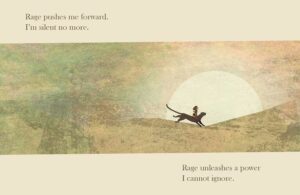 Anger is seen not only as a storm but also as a journey that takes the girl to a stronger, braver and more powerful place. As the storm of anger clears, what is left is a new confidence and a new journey, a new way forward.
Anger is seen not only as a storm but also as a journey that takes the girl to a stronger, braver and more powerful place. As the storm of anger clears, what is left is a new confidence and a new journey, a new way forward.The simple ability to name a feeling and know how to express it safely is an important tool in any child’s emotional literacy toolbox – especially for feelings like anger which are very much part of human experience.
This is a stunning book with huge opportunities for discussion and reflection, as well as one that could lead to art, poetry or drama activities based on finding safe and positive outlets to express the enormity of the emotional experience.
Find Your Happy by Emily Coxhead
Find Your Happy is a bright, welcoming book that is bound to get children talking about emotions. Despite being called ‘find your happy’, the book recognises that it is sometimes hard to feel happy all of the time and that every day can be different. It gives honest advice and easy ways to cheer yourself up that do not involve the more common methods that can sometimes be suggested (for example playing on electronics and playing games).
A variety of emotions are highlighted in this book, including anger, worry and shyness. Each emotion comes with small tips and tricks that any individual child could easily use in real life to help make themselves feel better and to also help them embrace the emotion. In particular, the page about feeling sad and the encouragement given to talk to someone trusted is a particularly important one that could strike up many conversations and support children’s emotional literacy.
The book features on our Reception reading list but is also widely enjoyed by older children.
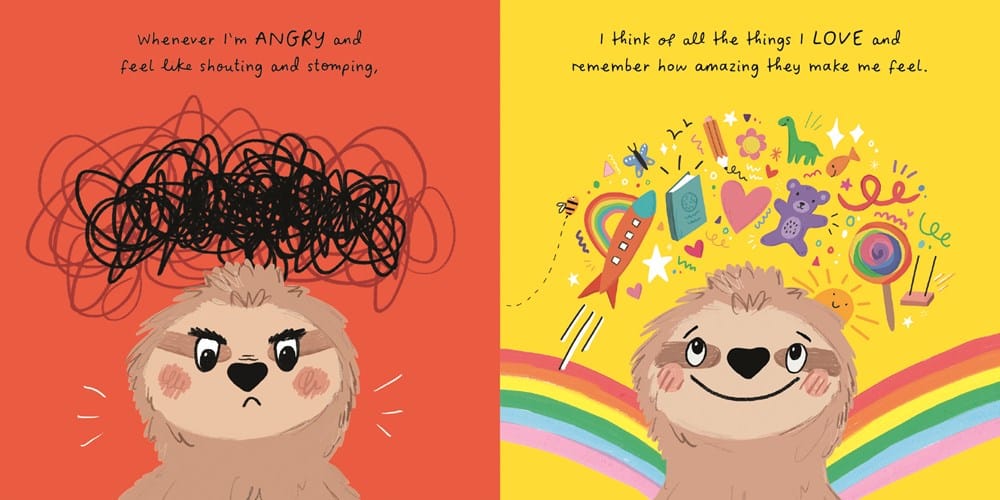 The wording and designs of each page are colourful, engaging and fun, making the book easy to follow. Teachers find that the book can be a good stimulus for a ‘one-off’ lesson just as much as a series of learning about different emotions. The motif of a sloth animal running throughout each page is also an appealing addition, adding subtle humour and is sure to be a hit with children.
The wording and designs of each page are colourful, engaging and fun, making the book easy to follow. Teachers find that the book can be a good stimulus for a ‘one-off’ lesson just as much as a series of learning about different emotions. The motif of a sloth animal running throughout each page is also an appealing addition, adding subtle humour and is sure to be a hit with children.It will no doubt leave readers with a heart-warming feeling inside and lots of great advice that they can use when understanding and dealing with different emotions.
For more ideas of books to support Children’s Mental Health Week, we’ve compiled a Mental Health Awareness booklist.
———————
Where next?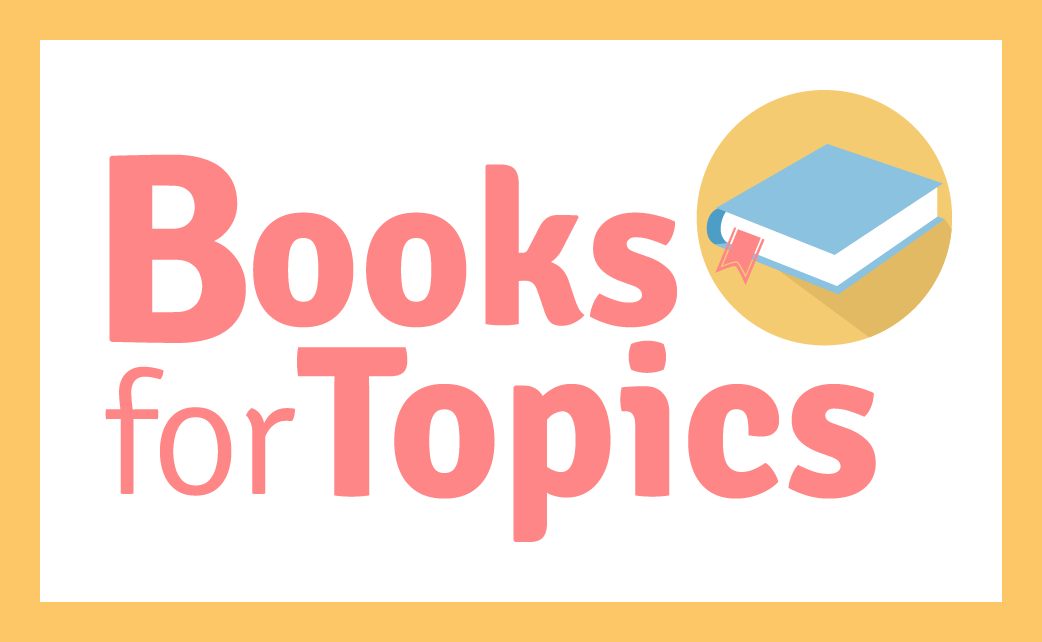
- Visit our Reading for Pleasure Hub
- Browse our Topic Booklists
- View our Year Group Recommended Read Booklists.
- See our Books of the Month.








